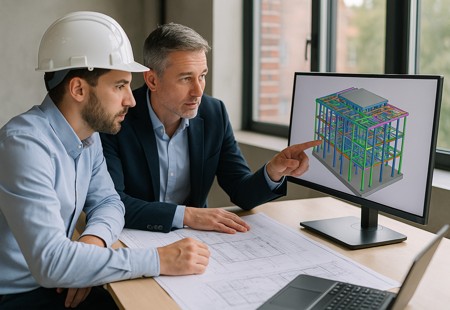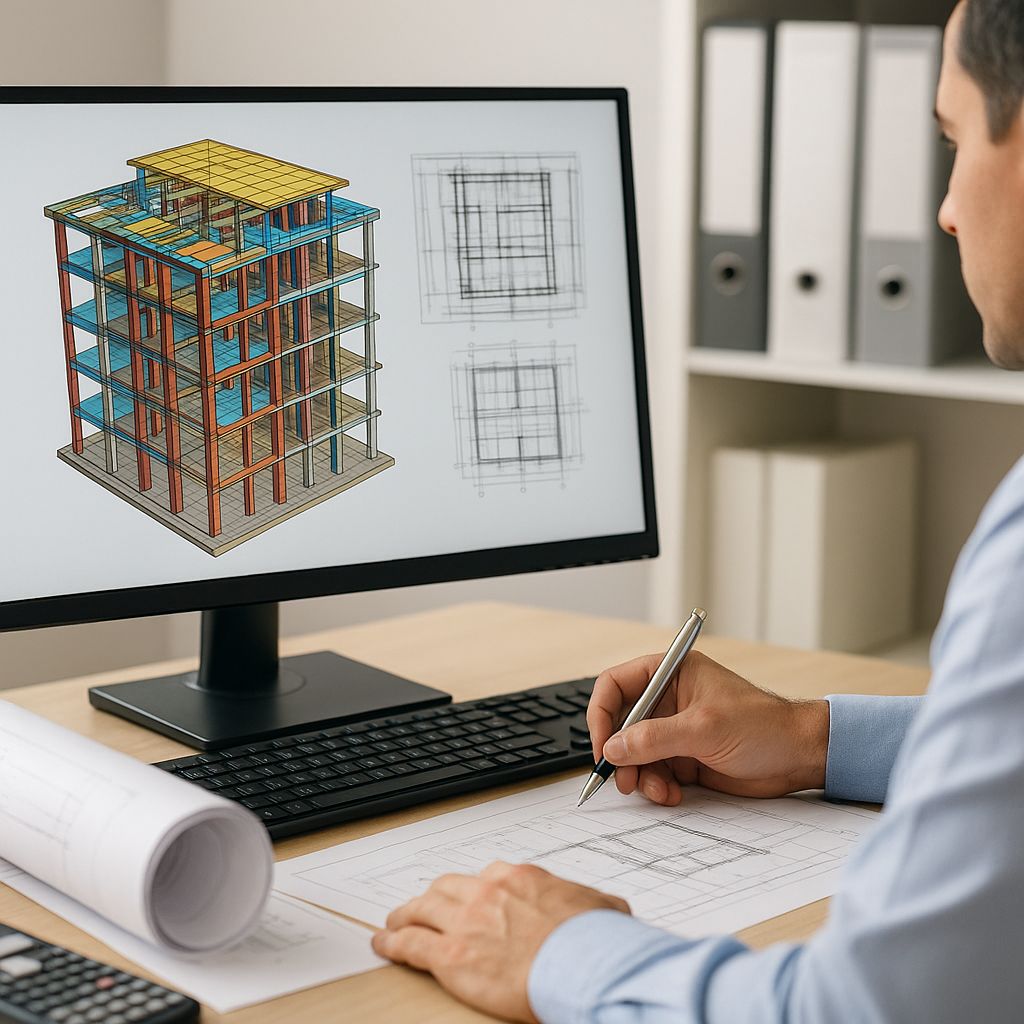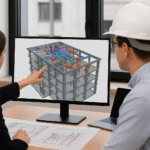The construction world is no stranger to change. Over the past two decades, the Architecture, Engineering, and Construction (AEC) industry has evolved from manual drafting tables and stacks of blueprints to highly detailed, data-rich Building Information Modeling (BIM) environments.
BIM has transformed the way architects, engineers, and contractors design, collaborate, and execute projects — reducing costly mistakes, speeding up timelines, and improving sustainability. And within the BIM workflow, there’s one stage that can make or break the success of a project: structural BIM modeling.
A building might look stunning on paper, but if it can’t withstand the intended loads, environmental stresses, or everyday wear and tear, the design fails its most basic test — safety. That’s where structural BIM services step in, ensuring the “skeleton” of your building is sound, resilient, and built to last.
In this guide, we’ll explore:
-
What structural BIM modeling is
-
Why it’s essential
-
The role of structural BIM consultants
-
The key questions you should ask before hiring one
What Is Structural BIM Modeling?
Think of structural BIM modeling as the digital blueprint of a building’s backbone. It’s a 3D, information-rich model of every beam, column, wall, and floor, complete with data on dimensions, materials, load capacities, and more.
This approach doesn’t just help visualize the design — it allows architects and engineers to:
-
Spot potential issues early
-
Optimize material usage
-
Improve coordination across disciplines
-
Ensure compliance with safety standards
Structural BIM models typically include:
-
Columns, beams, and trusses
-
Walls and floors
-
Foundations and slabs
-
Roof structures
-
Rebar and steel detailing
By integrating this with the broader BIM process, teams can streamline workflows, reduce rework, and keep projects on time and within budget.
Why Work With a Structural BIM Consultant?
While many firms have in-house modeling capabilities, structural BIM consultants bring a higher level of expertise, precision, and project management skills.
A good consultant can:
-
Guide the proper implementation of BIM for structural design
-
Create accurate 3D models and detailed documentation
-
Identify clashes before construction begins
-
Provide precise cost and quantity estimates
-
Maintain data accuracy throughout the project lifecycle
In short, they help you avoid surprises — the costly kind.


Questions to Ask Your Structural BIM Consultant
Choosing the right consultant can feel overwhelming. To make it easier, here’s a structured set of questions you can ask to assess their suitability.
1. Experience & Expertise
-
What types of structural BIM projects have you worked on?
-
Can you share examples or case studies of similar projects?
-
How do you ensure accuracy and consistency across your models?
Why it matters: Experience shows a consultant’s ability to handle complexity, adapt to challenges, and deliver consistent results.
2. Project Understanding
-
How will you approach BIM implementation for my specific project?
-
How do you coordinate with architectural, MEP, and other disciplines?
-
What tools and platforms do you use for collaboration?
Why it matters: A well-rounded consultant must integrate seamlessly with other teams and adapt to the project’s unique requirements.
3. Budget & Pricing
-
What is your cost structure for structural BIM services?
-
How do you manage scope changes or unexpected costs?
-
Are there any hidden fees I should be aware of?
Why it matters: Transparency in pricing prevents misunderstandings and keeps the project financially on track.
4. Support & Training
-
Do you provide training for our in-house team to work with the model?
-
Will you offer ongoing support during the construction phase?
Why it matters: Support ensures that the model remains accurate and useful from design through handover.
5. Data Accuracy & Change Management
-
How do you maintain accuracy in your BIM models?
-
How do you handle design changes and keep documentation up to date?
Why it matters: Inaccurate data can lead to costly mistakes. Change management is essential for keeping the model reliable.
Why PreciseBIM Is the Right Choice
At PreciseBIM, we combine cutting-edge technology, deep industry expertise, and a collaborative approach to deliver structural BIM models that exceed expectations.
Here’s why we’re trusted by leading AEC firms:
-
Proven Experience – We’ve successfully delivered structural BIM projects for residential, commercial, and industrial developments worldwide.
-
Accuracy You Can Count On – Every model undergoes rigorous quality checks to ensure data integrity and compliance with industry standards.
-
Collaborative Communication – We work closely with architects, engineers, and contractors to keep everyone aligned at every stage.
-
Cost & Time Efficiency – Our processes are designed to reduce rework, optimize material usage, and speed up timelines.
-
Global Delivery Advantage – With our Canadian presence and a skilled offshore team in India, we deliver top-tier quality at competitive rates.
When you partner with PreciseBIM, you’re not just hiring a consultant — you’re gaining a reliable extension of your team.
Final Thoughts
Structural BIM services are more than just a step in the design process — they’re the foundation of a safe, efficient, and high-quality build. Partnering with the right consultant ensures you have not only a strong structural framework but also a smooth, coordinated, and cost-effective project.
By asking the right questions before hiring, you set your team up for fewer delays, better collaboration, and a final structure that stands the test of time.
“Engineering is achieving function while avoiding failure.”Henry Petroski











